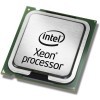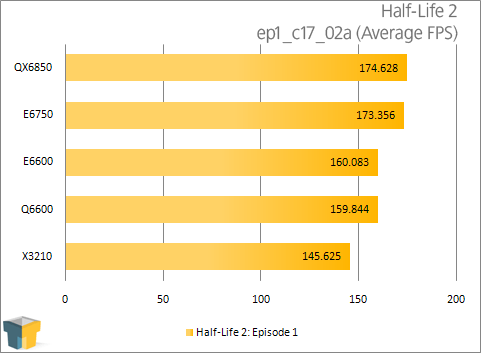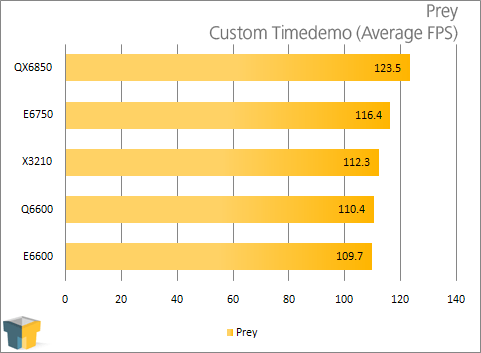- Qualcomm Launches Snapdragon 4 Gen 2 Mobile Platform
- AMD Launches Ryzen PRO 7000 Series Mobile & Desktop Platform
- Intel Launches Sleek Single-Slot Arc Pro A60 Workstation Graphics Card
- NVIDIA Announces Latest Ada Lovelace Additions: GeForce RTX 4060 Ti & RTX 4060
- Maxon Redshift With AMD Radeon GPU Rendering Support Now Available
Intel Xeon X3210 2.13GHz Quad-Core B3-Revision

One of the most popular CPUs on the market right now is the Q6600, thanks to the fact that it offers four cores at 2.4GHz. But what about the Xeon’s? Their prices are also more affordable now, with their X3210 2.13GHz retailing for $260. Read on as we pit this Quad-Core against the rest of our fleet.
Page 8 – Gaming Performance
As mentioned on our testing methodology page, all FPS are tracked using FRAPS 2.82 except for Prey, which is the only title here to use a timedemo. There are two reasons for this. First, the game limits the framerate to 60FPS, while the timedemo does not. The downside is that at that point, it’s more CPU dependant than GPU dependant. In the case of this review though, that’s a good thing.
All games are run at 1600×1200 with mid-level AA and AF. The exception is Supreme Commander which is run at 1920×1200 and completely maxed out settings. An 8800GTX card is used to remove as much of a bottleneck as possible, so that any increase of Avg FPS will be solely because of the faster processor. Note that Half-Life 2, Stalker and SupCom are completely manual play-throughs, so variances in each run could cause a CPU achieve a lower score.

Half-Life 2 is a heavily CPU-bound game, although the game doesn’t take advantage of dual core or higher processors. With 160FPS as is though, do we really need it to?

As evidenced by comparing the E6600 to Q6600, STALKER is single-threaded, but improved by faster CPU frequencies.

Being a timedemo, the highest FPS will automatically go to the fastest processor. It gives us a general idea of what benefits to expect from moving up to a faster frequency, however. As mentioned on our testing methodology page, SupCom is run with maxed out graphics (8xAA) at 1920×1200 to push our GPU as much as possible and also to see if more than one CPU core will be used.
The level chosen is Finn’s Revenge, run off a saved-game that we previously made which begins us late into the mission. For this run, we create a few extra killing machines in addition to what we already have, and command them to go destroy the enemy. The entire process takes about eight minutes, and you can see an example of how much action and bots are on the screen on our testing methodology page.

At any given time, not more than 1.5 cores were used, and that was only random peaks. I am not sure what it would take to have even more usage, but the fact is, if you have at least a dual core processor, you can expect good results. By comparison, I disabled one of the cores on the E6600 processor and received an average of 37FPS.
Let’s wrap the review up with a focus on overclocking.
Support our efforts! With ad revenue at an all-time low for written websites, we're relying more than ever on reader support to help us continue putting so much effort into this type of content. You can support us by becoming a Patron, or by using our Amazon shopping affiliate links listed through our articles. Thanks for your support!





